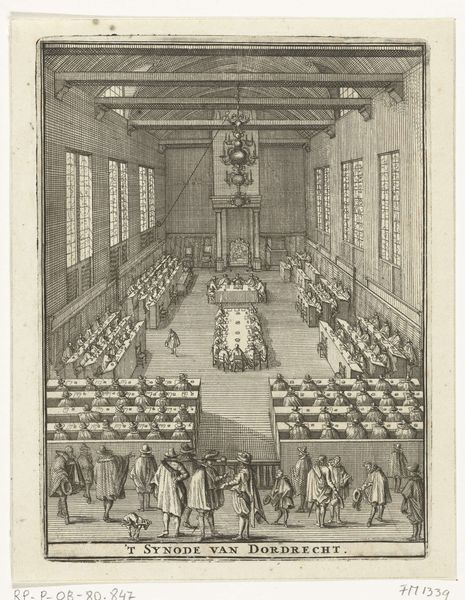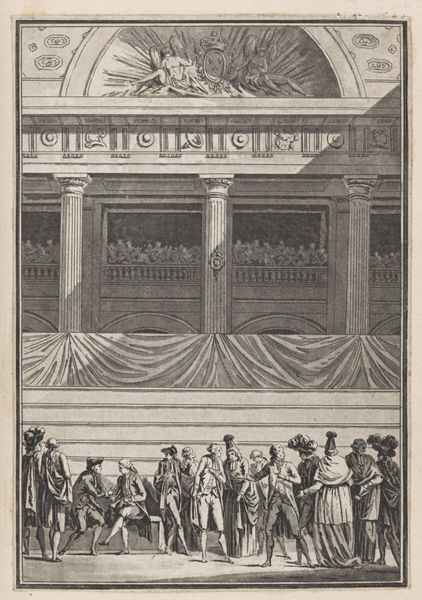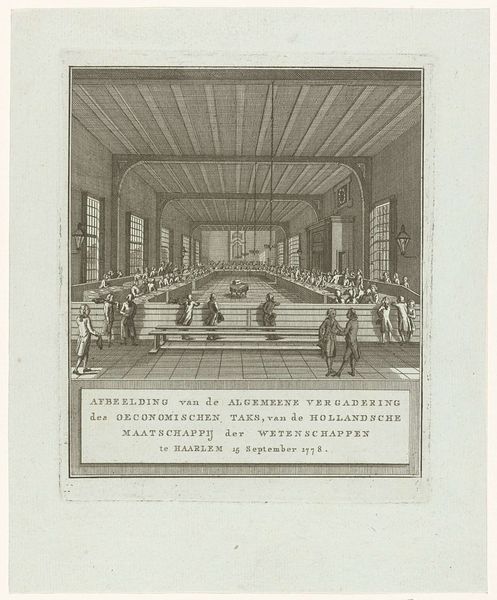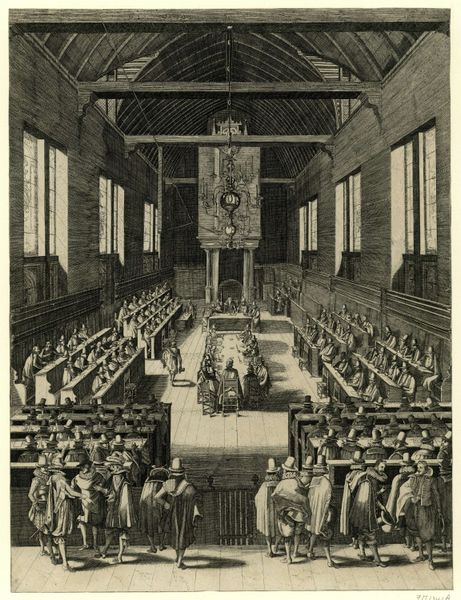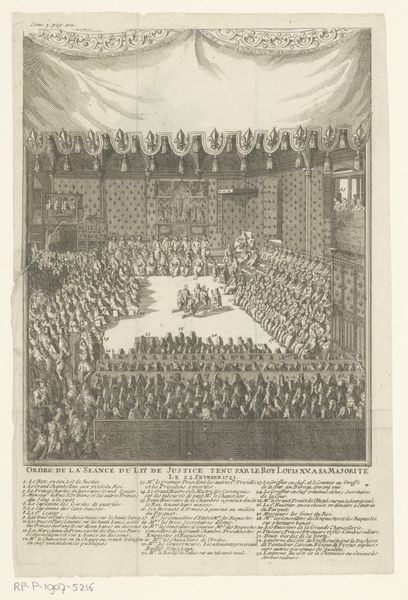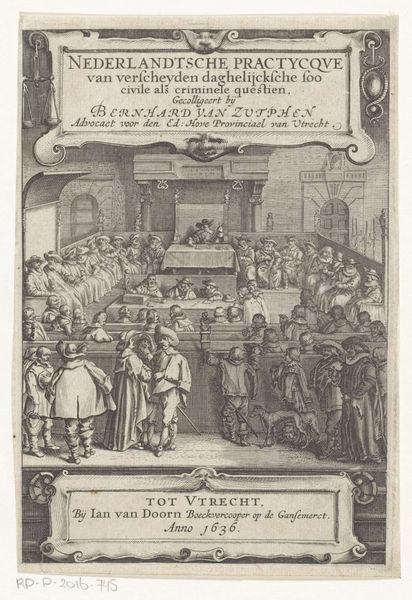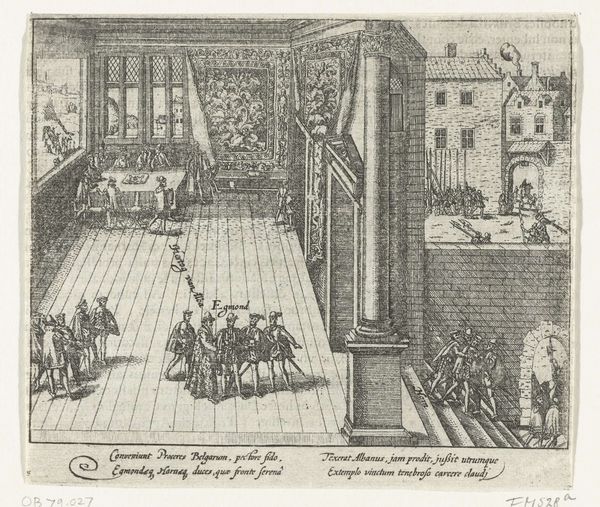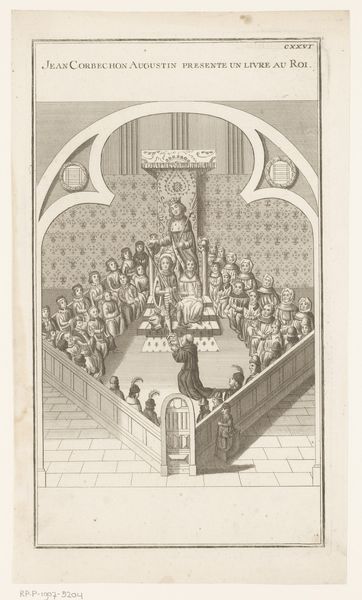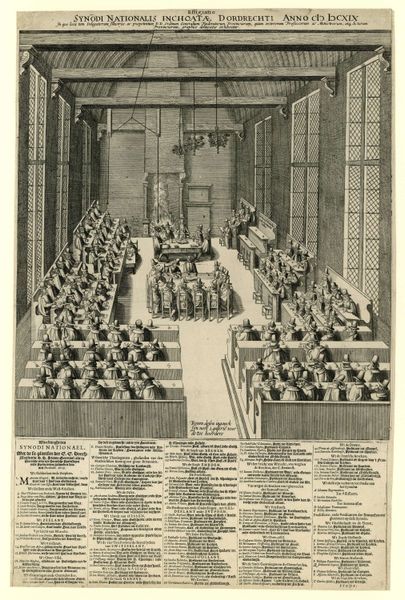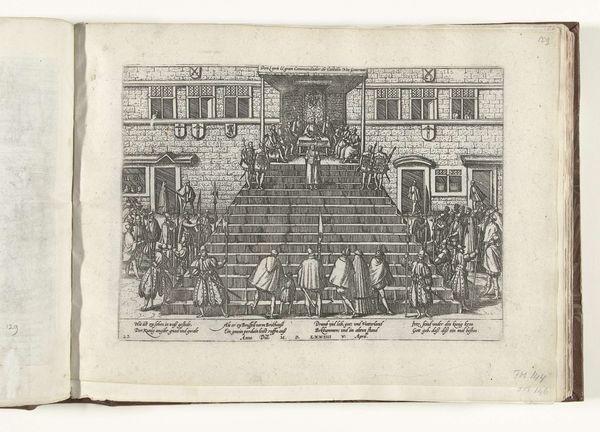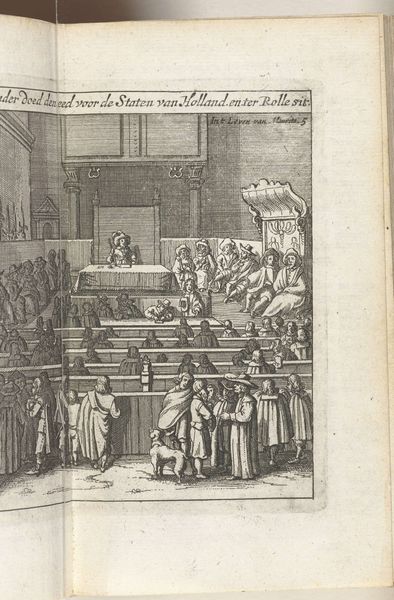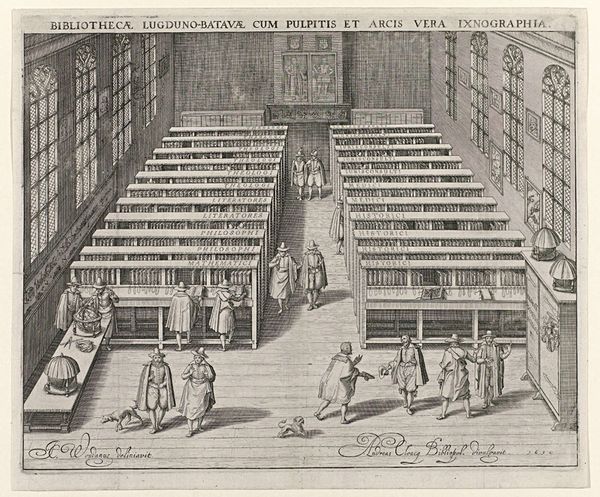
Titepagina van het pamflet: Afbeeldinghe des Synodi Nationael, met de sidt plaetsen der (...) H.H. Staten Generael / als in Heemsche ende uyt Heemsche Professoren ende Predicanten / gehouden binnen Dordrecht An. 1618 1618
0:00
0:00
print, engraving
#
medieval
#
dutch-golden-age
# print
#
geometric
#
history-painting
#
engraving
Dimensions: height 182 mm, width 145 mm
Copyright: Rijks Museum: Open Domain
Editor: Here we have an engraving from 1618, "Afbeeldinghe des Synodi Nationael," made by an anonymous artist. It depicts the National Synod of Dordrecht. It's quite a formal scene. Everyone is neatly arranged, and the architecture is imposing. What’s your read on it? Curator: Well, seeing this print, I’m immediately drawn to its political context. The Synod of Dordrecht wasn't just a religious gathering; it was a deeply significant moment in the power dynamics of the Dutch Republic. Editor: Power dynamics? Curator: Absolutely. It’s important to consider the competing theological factions at the time. The Synod was convened to settle the disputes between the Calvinists and the Remonstrants, also known as Arminians. The visual order, the rigid seating arrangements—these all communicate an attempt to impose a specific, dominant ideology. Who do you see as holding the power within the engraving? Editor: I guess the people at the table in the middle? It does look like the artist is using visual language to present a very clear hierarchy. Curator: Precisely. Think about who was invited to participate and whose voices were marginalized or silenced. The Synod resulted in the condemnation of Arminianism, leading to the persecution of its followers. This image, then, becomes a record of that power imbalance, a document of theological and political repression masked by an image of orderly consensus. Editor: I see your point. It’s much more than just a historical record; it's an image complicit in enforcing a particular viewpoint. It's disturbing to think about how art can be used that way. Curator: It prompts us to question whose perspectives are being represented and how images contribute to shaping historical narratives. I now understand the power of intersectional interpretation and art analysis, going beyond mere aesthetic appreciation to understanding historical, social, and political contexts, and reflecting on power dynamics embedded within artworks.
Comments
No comments
Be the first to comment and join the conversation on the ultimate creative platform.
